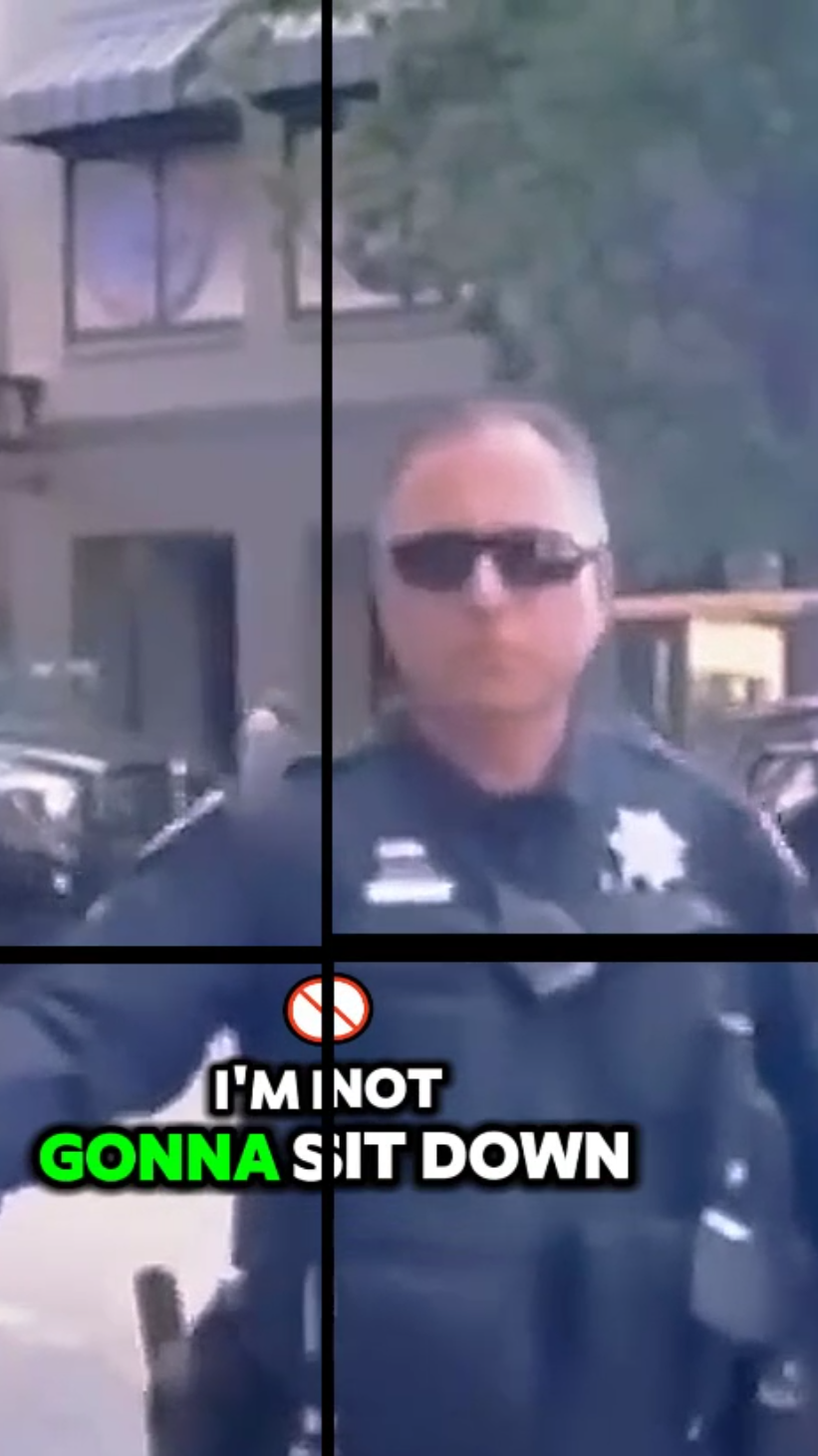In a moment that’s sparking conversation and raising eyebrows across the internet, a man’s interaction with local police has gone viral after a seemingly routine stop escalated into a tense confrontation about rights, authority, and the interpretation of the law.
It all started when a police officer attempted to search and detain a man, asking him to provide identification. However, the man, calm and assertive, refused to hand over his ID, standing firm with the claim: “I haven’t done anything. Innocent until proven guilty.”
The Stand-Off Begins
The interaction began when the police officer asked the man for his ID, a routine request in many encounters. But the man’s response was anything but routine: “I haven’t committed any crime. Innocent until proven guilty,” he said, challenging the officer’s request.
The officer insisted that the man was required to provide identification, but the man wasn’t having it. He asked, “Am I free to go?” The officer, without hesitation, replied: “No.”
This immediately led the man to request to speak to the sergeant or supervisor, wanting a higher authority to assess the situation. The officer, now facing resistance, seemed taken aback, but soon a second officer arrived on the scene.
The Supervisor’s Clarification
As the conversation intensified, the second officer, identified as a supervisor, explained the rules of the location they were in. The officer explained that the man was not allowed to just walk into a particular building without a valid reason and that it wasn’t just about parking a vehicle, but about conducting activities within restricted premises.
The officer clarified that the man wasn’t harassing anyone but could not simply enter or record inside the building without purpose. The key issue wasn’t his actions but the location. Essentially, the officer emphasized that while the man had every right to park and walk around, recording and lingering in a restricted area was a different story.
The Police Walk Away
After a few more tense moments, the officers simply walked away, leaving the man standing firm on his principles. Despite the standoff, no charges were made, and the man walked away without incident.
The video of the encounter quickly made its rounds on social media, and reactions have been mixed. Some are applauding the man’s assertiveness and knowledge of his rights, while others are questioning whether the officers handled the situation correctly.
The Bigger Debate
While the situation may have been resolved peacefully, it raises important questions about how law enforcement interacts with civilians in situations where the lines between personal freedoms and authority are blurred.
It’s not the first time the debate over “innocent until proven guilty” and the right to refuse identification has made headlines. In many jurisdictions, citizens have the right to refuse to provide ID unless they are being lawfully detained or arrested, but these laws can be tricky to navigate, and enforcement can vary widely from one region to another.
For the man in this viral encounter, standing up for his rights led to a peaceful resolution. Whether or not his actions were justified is up for debate, but what remains clear is the powerful conversation sparked by this tense moment: When does authority cross the line into overreach, and how far do our rights go when faced with law enforcement?
This story serves as a reminder of the delicate balance between individual freedoms and the role of law enforcement in ensuring public safety. And one thing’s for sure—this viral encounter is far from the last time these questions will come up in the public discourse.
What Do You Think?
Did the man stand up for his rights, or did he escalate a situation unnecessarily? Should police be more flexible with identifying civilians, or is the law clear on the matter? Drop your thoughts in the comments below!
This encounter may have ended with the police walking away, but the conversation surrounding it is only just beginning.
